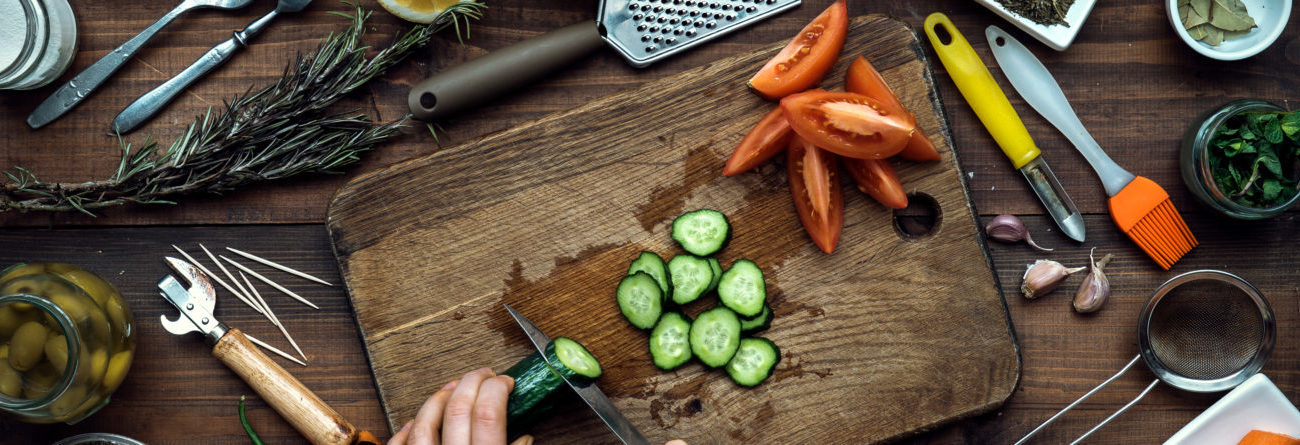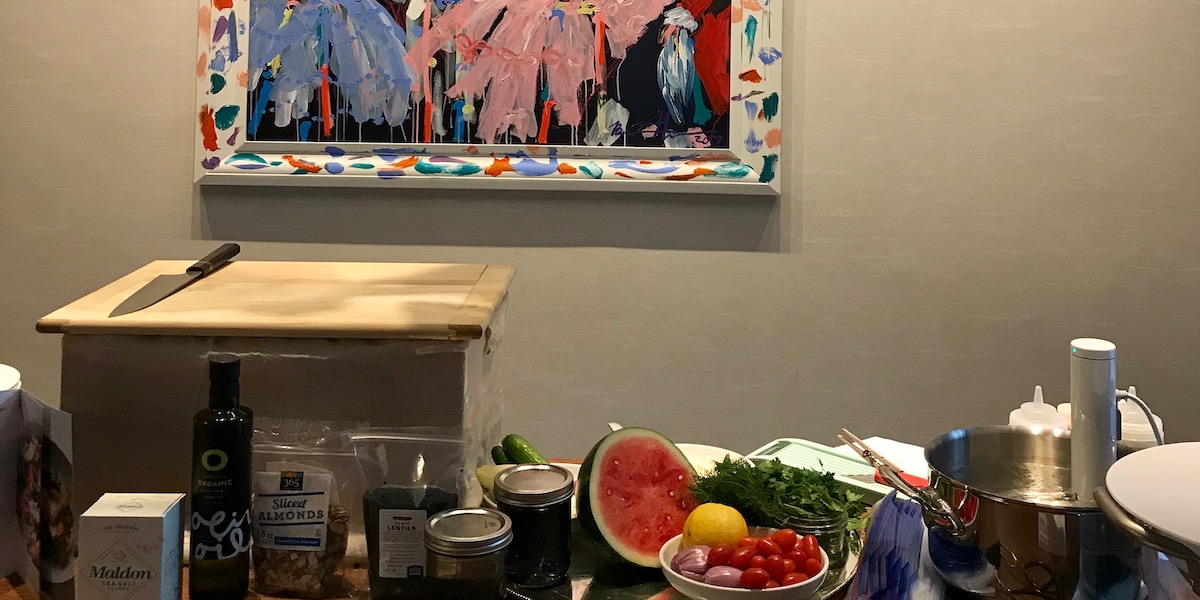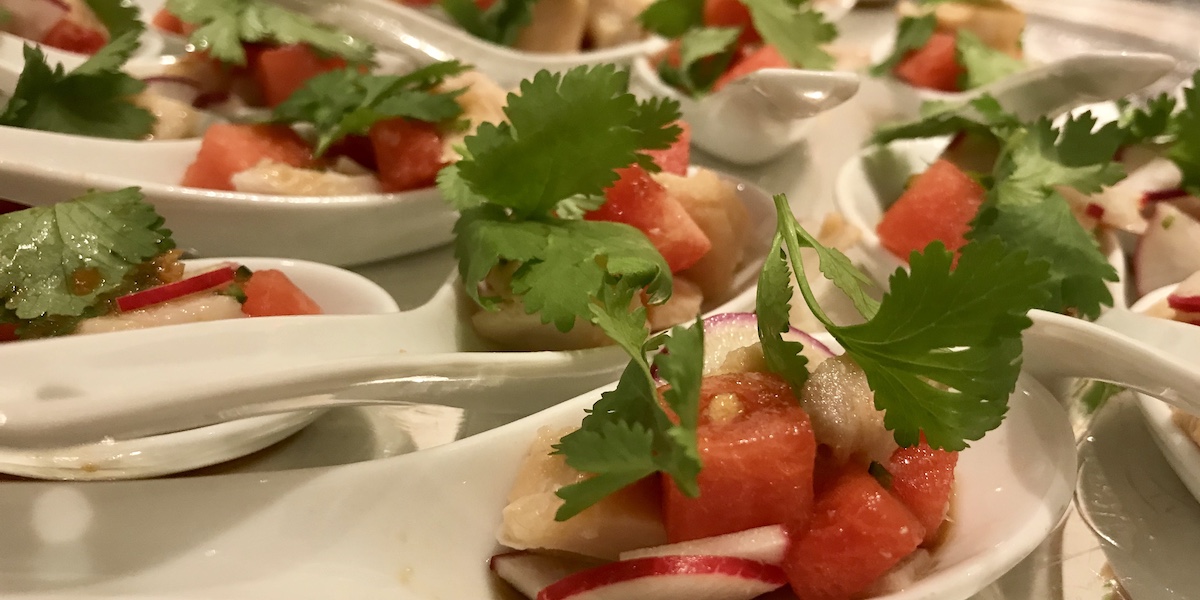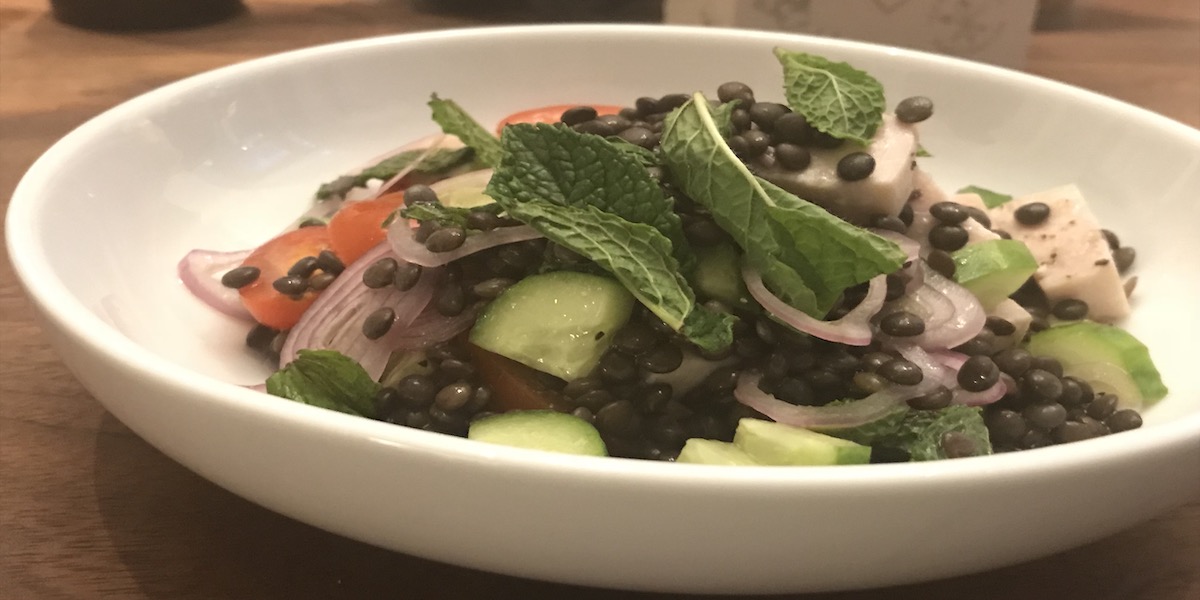
Intimidated by Sous-Vide Cooking? A Basic Primer on Where to Start
Sous vide. Two tiny words that intimidate so many curious home cooks. The questions are limitless: How high does the water temperature need to be? What kind of bag am I supposed to use? When will I know when it’s done? Truthfully, it’s enough to turn many of us off altogether from this sophisticated French technique. But it shouldn’t be. Because if you walk through life never knowing the poached perfection of a sous vide chicken breast, well, you’re missing out.
In the garden view lobby of the stunning 261 Hudson, the culinary geniuses from Chef Steps demonstrated the best ways to master this technique. As any foodie knows, the joy of cooking is only real when shared, so we did: with cold beers and frosty glasses of wine, with food coaches from Equinox and residents of the Related community, and with friendships forged over the course of the evening. By the time the night ended, all parties walked away with the knowledge of how to conquer this (surprisingly fool-proof) technique. But only after a rooftop cheers to warmer weather, and the unobstructed view of the sunset over the Hudson.
Let’s start with the basics: sous vide means “under vacuum” in French, because of the air-tight environment in which the food cooks. For those of us who are right now Googling what is sous vide, don’t worry, you’re not alone. There are many people who have never even seen this practice, let alone been aware of if and when they’ve eaten it. Cooking sous vide is to boil water to a very precise temperature, to place uncooked food into a vacuum-sealed bag, and to place the bag in the water to cook until done.
Essential Tools
Although you can go purchase a bulky sous vide machine and watch eight hours of YouTube instruction to become a successful sous vide chef, it isn’t necessary. All you need to get started is a pot, a Ziploc bag, and a thermometer. The sous vide process is not unlike the process of poaching an egg. In fact, the biggest difference is the elimination of air in the vacuum-tight seal. If you feel comfortable boiling water for pasta, you can cook sous vide.
 These are the tools you need to get started:
These are the tools you need to get started:
- Ziploc freezer-style bags or canning jars are both perfect for sous vide cooking
- An immersion tool, like a Joule, is an incredible addition to this experience, but not mandatory
- If cooking with a bag, secure it over the edge of the pot with a clip to keep from floating to the top
Other Cooking Techniques vs. Sous Vide
Why learn a new method for cooking chicken breast when I can just grill/sauté/bake it? Taste, texture, and nutrition. When you eliminate air, flavor has nowhere to evaporate, meaning the food cooks in its juices. Next, texture! When a ribeye cooks on a grill or in a pan, the outside of the meat has direct contact with the heat and cooks at a much faster rate than the inside. But this method, although tried and true, is robbing you of the velvety texture of a bite of steak cooked all the way through.
Lastly, nutrition. Most of us are interested in learning ways to become healthier, but few of us want to sacrifice on taste. You can keep both by changing the method of cooking and using less oil in your meal preparation. With sous vide cooking, meat cooks in its own juices, vegetables don’t need to be slathered in olive oil to taste palatable. Plus, you can create healthier versions of your favorite desserts! Did someone say creme brûlée?
Waste Not, Want Not
If you work with an economy-sized kitchen or cannot possibly part with that espresso machine you bought but rarely use, the good news is that sous vide cooking requires much less counter space and far fewer pans than traditional cooking method. So, if you’re interested in less clean-up time and more Netflix, this could be your answer. Prep is easy and simple (you just need a bag and a pot) and once it goes in the water bath, your food cooks itself. In addition, sous vide cooking reduces waste as well. Food prepared in other styles dries out faster and results in waste. Did you know Americans throw away $165 billion of groceries every year? Don't be a statistic.
Sous Vide Training Wheels
If you’ve finished reading the part about steak and your mouth is watering, but you’re not convinced enough to go buy a piece of equipment just yet, try practicing at home with a rice cooker or a slow cooker to figure out if this style of cooking is right for you. Use the Joule app, even if you are still deciding whether to make the plunge into the sous vide world, for a step-by-step tutorial of method, temperature, and cook times. Check out their hundreds of recipes while you’re there, too. And make sure you try the sous vide foundations like chicken breast, ahi tuna, lentils, carrots, salmon, and desserts.
 If you’re a foodie in search of flavor and texture, you’ll be hooked on your first bite of salmon. If you’re a wellness guru who reads nutrition labels and monitors sodium, the lentils and carrots will speak for themselves. And if you’re a little bit of both, you’re likely a Related resident, because you obviously have taste in apartments, so it reasons you’d have taste when it comes to cooking, too.
If you’re a foodie in search of flavor and texture, you’ll be hooked on your first bite of salmon. If you’re a wellness guru who reads nutrition labels and monitors sodium, the lentils and carrots will speak for themselves. And if you’re a little bit of both, you’re likely a Related resident, because you obviously have taste in apartments, so it reasons you’d have taste when it comes to cooking, too.
Recipes To Get You Started:
HOW TO MAKE AHI TUNA
- Brine Tuna: Stir 5 cups of water with 5 oz of salt and 5 oz of sugar until completely dissolved. Slice 1 lb. of ahi tuna into half-inch chunks. Place tuna in brine, let stand for 30 minutes.
- Dry Tuna: Remove fish from brine and air dry or use paper towel.
- Place tuna, 7 oz olive oil, and lemon peel into a canning jar or Ziploc bag. Cook at 113 degrees for for 30 minutes.
ENDIVE AND AHI TUNA SALAD
INGREDIENTS
- 5 ounces sous vide tuna
- ½ cup onion puree
- 2 Tbsp. parsley, chopped
- Salt
- Pepper
- Lemon juice
- 6 Belgian endive leaves
- 1 ½ Tbsp. almond slivers
DIRECTIONS
- In a mixing bowl, add tuna, onion puree, chopped parsley, salt, pepper, and lemon juice. Mix well to form the tuna salad, then fill the Belgian leaves with the mixture. Place in an airtight container along with a small plastic bag containing the almond slivers. Store everything in the fridge.
SWEET AND SPICY AHI TUNA SALAD
- 5 ounces sous vide tuna
- 2 radishes, sliced
- 3 cups watermelon, diced
- 2 tablespoons tangy soy-vinegar sauce
- 1 lime, juiced
- 2 tablespoons Serrano chiles
- 2 tablespoons cilantro
- Salt
DIRECTIONS
- Flake the tuna into an airtight container and add the radishes and watermelon. In a separate container, mix the soy-vinegar sauce and lime juice to form the vinaigrette. Place the Serrano chiles and cilantro in a separate container and store everything in the fridge.
HOW TO MAKE SOUS VIDE LENTILS
- Fill canning jars with lentils, water, and salt. The ratio is 1:2 parts lentil to water, a pinch of salt in each jar.
- Add jars to 185 degree preheated sous vide, cook 90 minutes.
LENTIL AND CHICKEN SALAD WITH SHALLOTS AND MINT
- 14 oz lentils
- 1 sous vide chicken breast, diced
- 2 shallots, thinly sliced
- 1 cucumber, diced
- 6 oz tomatoes, halved
- 2 oz mint, torn
- 2 oz cilantro, chopped
- Salt
- Pepper
- Lemon
- Olive Oil
- Toss together and enjoy a high-fiber, high-protein, high-nutrition meal!
The Related Life is written and produced by Related Luxury Rentals. Be sure to follow us on Facebook, Twitter and Instagram for the latest events, news and announcements in your area, and tag us for a chance to be featured @therelatedlife and #therelatedlife.


